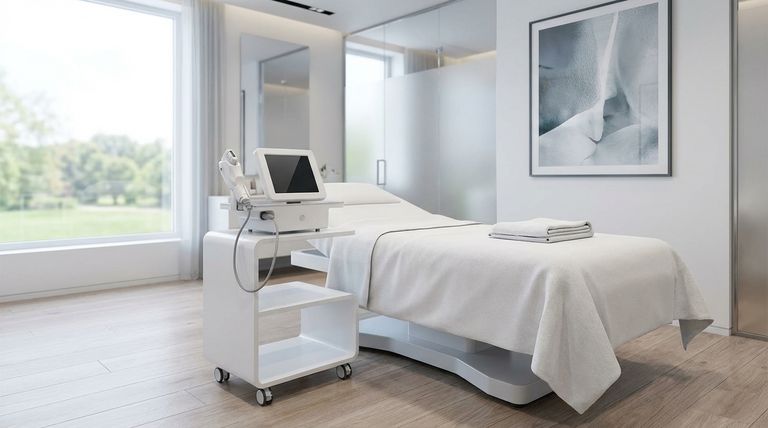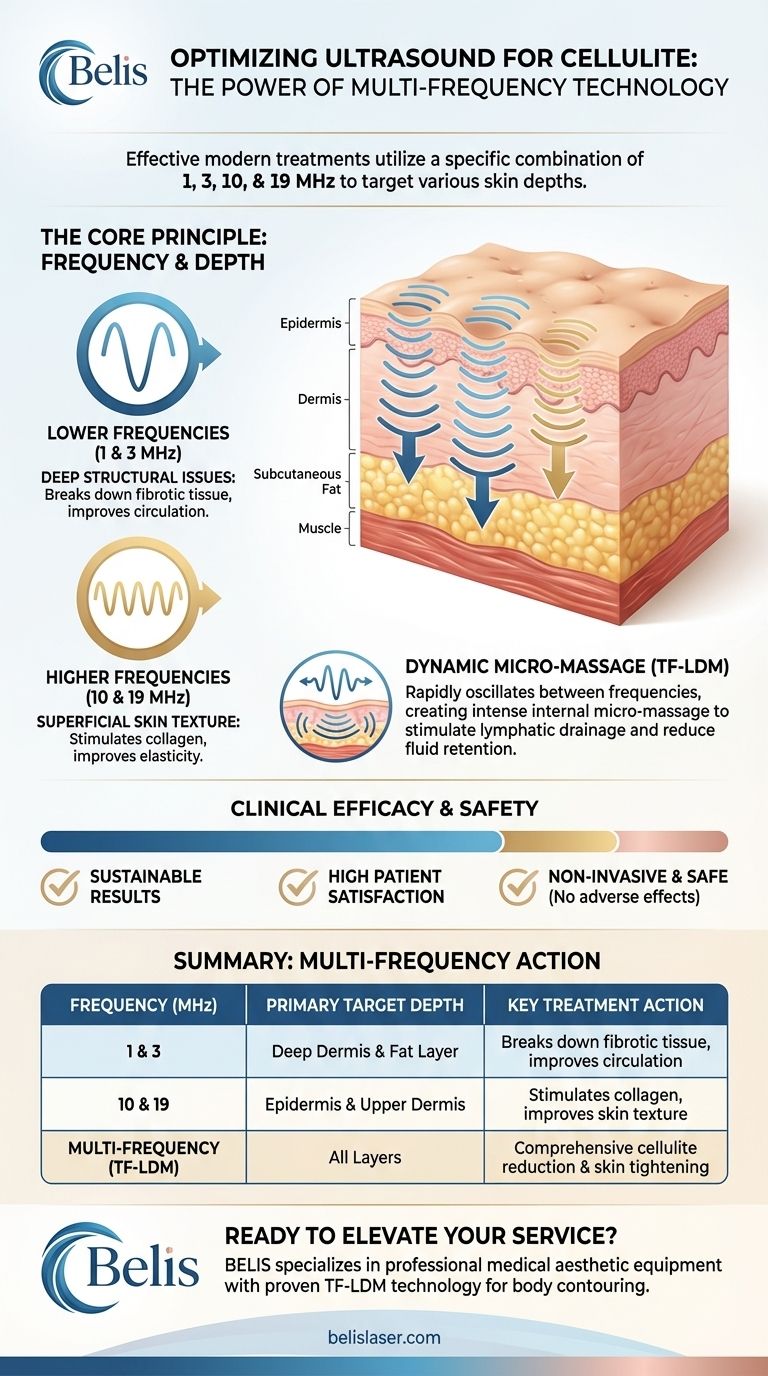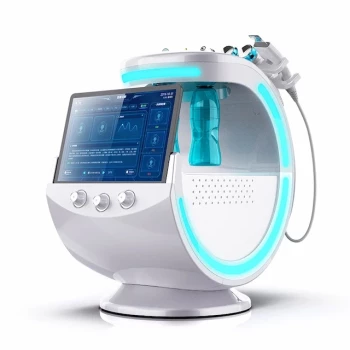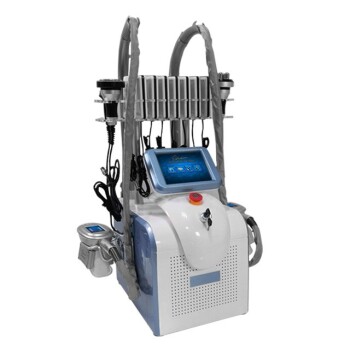In the context of modern cellulite treatments, the most effective ultrasound technologies utilize a specific combination of multiple frequencies, typically operating at 1, 3, 10, and even 19 MHz. This multi-frequency approach allows the device to target different skin depths simultaneously, addressing the complex structural issues that cause cellulite.
The key to effective ultrasound treatment for cellulite is not a single "magic" frequency, but the use of a dynamic, multi-frequency system. This technology, known as Triple-frequency Local Dynamic Micro-massage (TF-LDM), targets both superficial skin texture and the deeper connective tissues where cellulite originates.

How Multiple Frequencies Work Together
The effectiveness of this technology lies in the fundamental principle of ultrasound physics: frequency determines penetration depth. By combining different frequencies, the treatment can address the multifaceted nature of cellulite in a way single-frequency devices cannot.
The Core Principle: Frequency and Depth
Lower frequencies, like 1 and 3 MHz, possess longer wavelengths that penetrate deeper into the skin. They can reach the subcutaneous fat layer and the deep dermis.
Higher frequencies, such as 10 and 19 MHz, have shorter wavelengths and are absorbed more superficially. They primarily work on the epidermis and upper dermis.
Targeting Deep Structural Issues (1 & 3 MHz)
Cellulite is caused by fat lobules pushing up against the skin while the connective tissue bands (fibrous septae) pull down, creating a dimpled appearance. The lower frequencies of 1 and 3 MHz are crucial for targeting this deeper structural problem.
These frequencies help to stimulate metabolic activity in the deeper layers, promoting the breakdown of fibrotic tissues and improving local circulation.
Refining Superficial Skin Texture (10 & 19 MHz)
While the deeper work is happening, the higher frequencies of 10 and 19 MHz focus on the visible surface. They work to improve skin density, elasticity, and overall texture by stimulating collagen and elastin production in the upper layers of the skin.
This dual-action approach ensures the treatment not only addresses the root cause but also improves the skin's cosmetic appearance.
The "Dynamic Micro-Massage" Effect
The "LDM" (Local Dynamic Micro-massage) aspect is what makes this technology unique. The device rapidly oscillates between the different frequencies.
This rapid switching creates changing pressure gradients within the tissue, producing an intense internal micro-massage effect. This stimulates lymphatic drainage to reduce fluid retention and further enhances the breakdown of the rigid connective tissue structures responsible for dimpling.
Understanding the Efficacy and Safety
The use of this specific multi-frequency technology is supported by clinical findings that highlight both its effectiveness and safety profile.
Based on Clinical Study
A recent study on Triple-frequency, local dynamic micro-massage (TF-LDM) technology confirmed its potential as a highly effective, long-term treatment for cellulite.
Patient Satisfaction and Results
The study reported that treatments using the 1/3/10 MHz and 3/10/19 MHz combinations delivered sustainable results with high patient satisfaction. This indicates that the visible improvements were not merely temporary.
A Non-Invasive, Safe Approach
Crucially, the treatment was found to have no adverse effects. This positions it as a safe, non-invasive alternative to more aggressive procedures, which often carry risks of bruising, swelling, or discomfort.
Making the Right Choice for Your Goal
When evaluating ultrasound for cellulite, understanding the technology is key to aligning the treatment with your expectations.
- If your primary focus is a comprehensive, multi-layer treatment: Seek out providers or devices that specifically utilize triple-frequency or dynamic multi-frequency ultrasound, as this approach is designed to target both deep structural causes and superficial skin texture.
- If your primary focus is safety and a non-invasive procedure: The TF-LDM technology stands out due to its clinically reported lack of adverse effects, making it a strong candidate for those prioritizing a gentle yet effective treatment.
By understanding the role of different frequencies, you can make a more informed decision about the technology best suited to achieve your desired results.
Summary Table:
| Frequency (MHz) | Primary Target Depth | Key Treatment Action |
|---|---|---|
| 1 & 3 | Deep Dermis & Fat Layer | Breaks down fibrotic tissue, improves circulation |
| 10 & 19 | Epidermis & Upper Dermis | Stimulates collagen, improves skin texture |
| Multi-Frequency (TF-LDM) | All Layers | Comprehensive cellulite reduction & skin tightening |
Ready to offer your clients the next generation of cellulite treatment?
BELIS specializes in professional medical aesthetic equipment, including advanced multi-frequency ultrasound systems. Our technology, based on proven Triple-frequency Local Dynamic Micro-massage (TF-LDM), is designed specifically for medical aesthetics clinics and premium beauty salons seeking safe, effective, and non-invasive solutions for body contouring.
Elevate your service offerings and deliver clinically-supported results. Contact our experts today to learn how our equipment can become a cornerstone of your practice.
Visual Guide

Related Products
- 4D 12D HIFU Machine Device for Skin Tightening and Lifting
- 12D HIFU Machine Device for Facial HIFU Treatment
- EMSlim Body Sculpting Machine EMS Body Slimming Machine
- Cryolipolysis Fat Freezing Machine and Ultrasonic Cavitation Device
- Cryolipolysis Fat Freezing Machine Ultrasonic Cavitation Fat Reducing Device
People Also Ask
- What are the benefits of HIFU machine? Achieve Non-Surgical Skin Lifting & Tightening
- Is HIFU skin tightening safe? Ensure Your Safety with a Qualified Professional
- Is HIFU really worth it? Achieve Natural Skin Tightening Without Surgery
- How long does it take for HIFU to show results? See the Dual-Phase Timeline for Natural Lifting
- How does HIFU tighten the skin? The Science Behind Non-Surgical Lifting



















